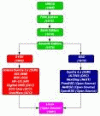| A 1614 map of Leiden. A walking tour through present day Leiden can be found here . This is an internet link, it is not on the CD.  Pilgrim Homes In Leiden by Jeremy Dupertuis Bangs (Excerpt from: The New England Historical and Genealogical Register, Vol 154, pgs. 413-445). Pg. 413. When the English Separatists who were to become famous as America's Pilgrims settled in Leiden in 1609, one of the first problems they had to solve was housing. Although for most of them their solutions during the first months of the Leiden exile are unrecorded, that in itself implies that they were renters. Eventually several bought houses. Property transactions in Leiden were carefully recorded, and the records are preserved. The pilgrims who bought or sold houses before 1620 were William Robinson, William Jepson, John Robinson, Henry Wood, Jane White, Roger Wilson, Robert Cushman, William Bradford, William Minter, Richard Masterson, John Ellis, John Kebel, Henry Coleth (or Collet), William Bristsman (or Bridgeman), Roger Symons, Phineas Edwards, Henry Richard, Bartholomew Smith, John Carpenter, and Thomas Rogers, besides Jan Allaert whose connection with the Pilgrim congregation is less certain, but who might be John Allerton. Various Pilgrims rented houses in more or less identifiable locations. The Leiden betrothal records, as well as other types of documents, identify some people's place of residence. Several Pilgrims lived "in Douveren" or near it: Elizabeth Pettinger, William Pontus, Jane Peck, John Spooner, and John Jennings. Dover was the name of a brewery situated between the Haarlemmerstraat, a major street running through the northern third of the city and the Oude Rijn (the north branch of the Rijn, or Rhine River), midway along the block bounded by the Hooijgracht bridge to the east and the Hooglandsekerksteeg to the west. John Jenny (not the same as John Jennings) who was a brewer's man (brouwerksknecht) living in the Veldestraat may have worked in this brewery with its other Pilgrim the Veldestraat may have worked in this brewery with its other Pilgrim associations. What the structural arrangements of breweries were is Pg. 414. unclear, but from these and other references not concerning Pilgrims we can conclude that breweries often included rental space. Taverns were also found on the brewery premises. The river frontage of the Douveren brewery was 15 roeden 6 voeten 6 duim (about 192'), which indicates that there was plenty of space in the lot where rental housing could be constructed. The exact location of the other rental property is unknown, like the house where Samuel Fuller lived near the Marepoort (a town gate), or the house on the Levendal (a long canal) where Francis Cooke and Hester Mayhew lived in 1608. Although the Pilgrims' houses have disappeared or cannot be precisely located, with the exception of the house of Anthony Clemens, in a room of which Alice, the widow of Thomas Rogers, was living with three children in 1622, study of sale records and comparison with similar rental properties can indicate something about these homes of the Pilgrims in Leiden. Pg. 432. On 22 February 1617, Thomas Rogers bought a house on the west side of the Barbarasteeg, in a row between houses owned by Jacob Sullof, fustian weaver. The neighbor to the rear was Aelbert Cornelisz. van Berckendael. Rogers' bondsman was Gerrit Gerritsz. van Berrevelt, a miller. Payment took the form of a mortgage for 475 guilders, of which 325 was due in cash immediately and 150 to be paid on May Day, 1617. On 1 April 1620 Rogers sold the house to Mardecheus Colven (not Cohen, contrary to the Dexters), for 300 guilders cash. Colven was from Colchester or Hastings. The sale was preparatory to Thomas Rogers' departure to go to New England on the Mayflower. He died in the first winter, leaving his widow and three children in Leiden. Pg. 433. In the poll tax of 1622 we see that Elsgen Rogiers (Rogers), widow of Thomas Rogiers, was living in the rear house or in the kitchen (In tachterhuys of Inde keucken) of the house on the corner of the Kloksteeg and the west side of the Pieterskerk churchyard. The children were Lijsbett and Grietgen (Lizzie and Gertie), identified as her children (haer kinderen), and Jan Thomasz. (who from his patronymic was John son of Thomas [Rogers]). They were living in the house of Pilgrim Anthony Clemens, a bombazineweaver, whose family consisted of his wife Jannetgen Jansdr (rendered by the Dexters as Jane Jones, although Jane Johnson would be equally possible, and her father's name may simply have been John, while the surname was omitted) and their children Compassi and Hopij (Compassion and Hope). The household included several poor orphans: Jan Robertsz., from the eastern Dutch region `t Goijlant (misread as Scotland by the Dexters); Marya Flut (Flood) and Lysbet Turner, with Sjou (Joe) Jansz and Jan Thomasz (already mentioned), all four described as orphans from England; and Marcus Druven, serge worker, with his wife Judit Jansdr. and their Son Jan, living upstairs in the same house. This house still stands, the only one with Pilgrim connections that is largely intact. Its step gable facing the Pieterskerk, seen in the map from 1600, has been reduced to a cornice with a hipped roof. |
 De voorouders van mijn kleinkinderen
De voorouders van mijn kleinkinderen
Broekman - Seidler Genealogie